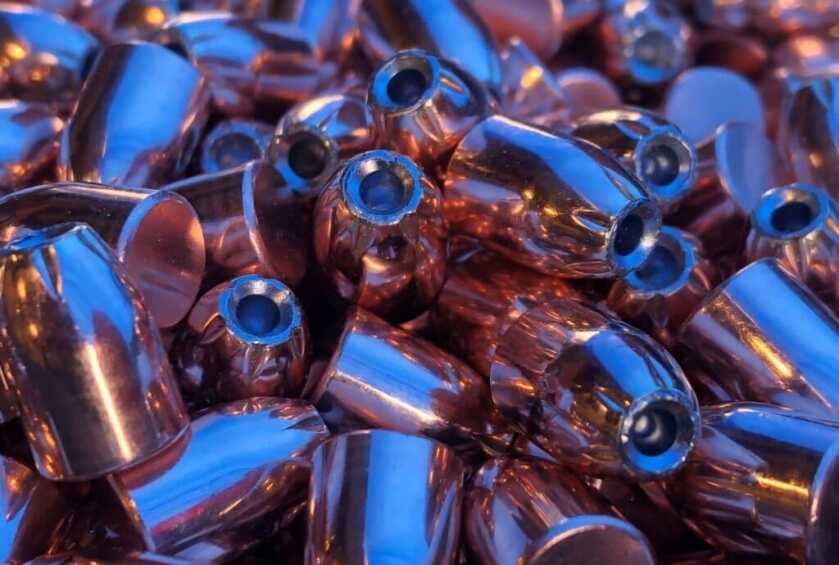
Shooters are some of the strangest people on the planet. Shooters will spend thousands and thousands of dollars on their handguns and their gear to ensure that they have every possible advantage when they step up to the firing line, but then they race out to buy the cheapest components for ammo they can find. The ammo issue is real! With great ammo, you can turn a $400 handgun into one that shoots as well as a gun that costs many thousands. The opposite is true as well. Sometimes cheap ammo can turn a handgun that cost many thousands of dollars into one that shoots about as well as a cheap one.
One thing every shooter should be looking for when selecting a bullet is accuracy. There are many manufacturers on the market but just because the company has a big name and marketing dollars behind it does not necessarily mean it is the best. And as with everything in the shooting industry, the cheapest stuff you can get is often cheap for a reason. That said, I’ve found that it’s possible to get high-end components from a small manufacturer for close to the prices of the cheapest out there. There are companies out there that will design, perform all the tests, and give full commitment to creating a superior bullet. RMR is one of those companies that produce match proven results but without the high dollar advertising campaign.

Over my career, I have shot hundreds of thousands of rounds so when I am testing the product I quickly know what I am looking for. Consistency in diameter, weight, and profile of a bullet all contribute to results. And keeping it in an attractive price range for the consumer is very important.
RMR Bullets
Rocky Mountain Reloading (RMR), is a family-owned company in Lewiston, Idaho. They manufacture a complete line of match quality 9mm bullets, but they also offer a variety of other products for the reloading community. The bullets tested in this article are RMR’s 9mm 124 JHP MPR (.3555”). MPR stands for Multi-Purpose Round. They say they named it MPR for three reasons: First, it was designed to work in 9mm as well as .357 Sig. Second, the hollow point isn’t just for show but actually functions as well as high dollar self-defense hollow points. Lastly, it’s priced low enough that you can actually afford to practice or compete with it.
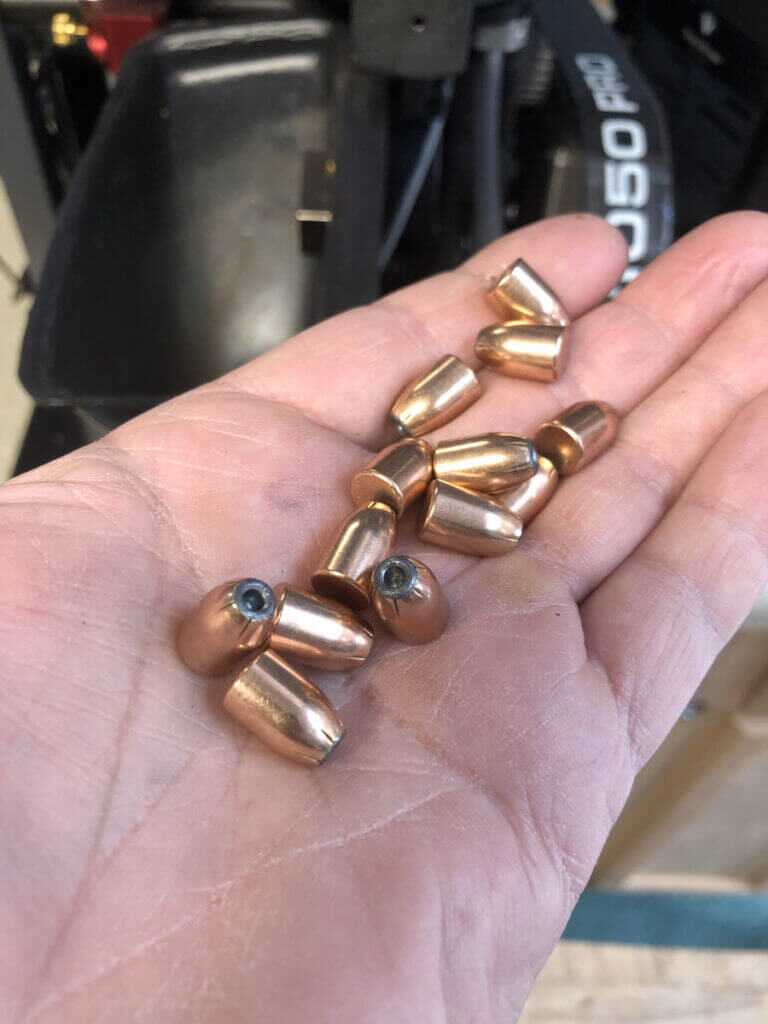
Upon opening the bag the first thing I noticed was the clean appearance of the bullet. Some attention and care was given to the final tumbling of this bullet. I appreciate when companies do this as some of the larger manufacturers sometimes will deliver bulk bullets with sizing lube still on them. I’m very compulsive with this and will typically throw the bullets in my tumbler to polish them off. But over-all, for the style shooting I do, it really doesn’t matter. I just appreciate a company that takes pride in the cosmetics of their product.
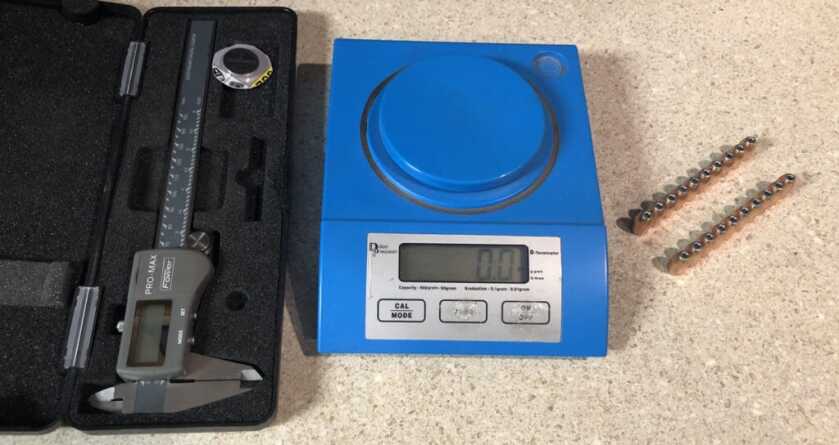
As with any bullet, I always measure the diameter for consistency. For this test, I randomly selected 20 bullets of the thousand round package. The bullet proved to be very consistent with every one of the 20 bullets measuring .3555 exact in diameter. And with this consistency, it typically means that one of the most important control measures has been met. Not all bullet manufacturers maintain this degree of consistency. But at the price point RMR offers, this is pretty phenomenal. We will talk price later.
The problem with bullets that aren’t consistent in diameter is that the rifling in your barrel does not contact the bullet consistently with the same amount of engagement into the jacket and seal during combustion to provide equal pressure for each round. This can lead to a wobble or tumble of a bullet, and also not maintain minimal standard deviation‘s in velocity.
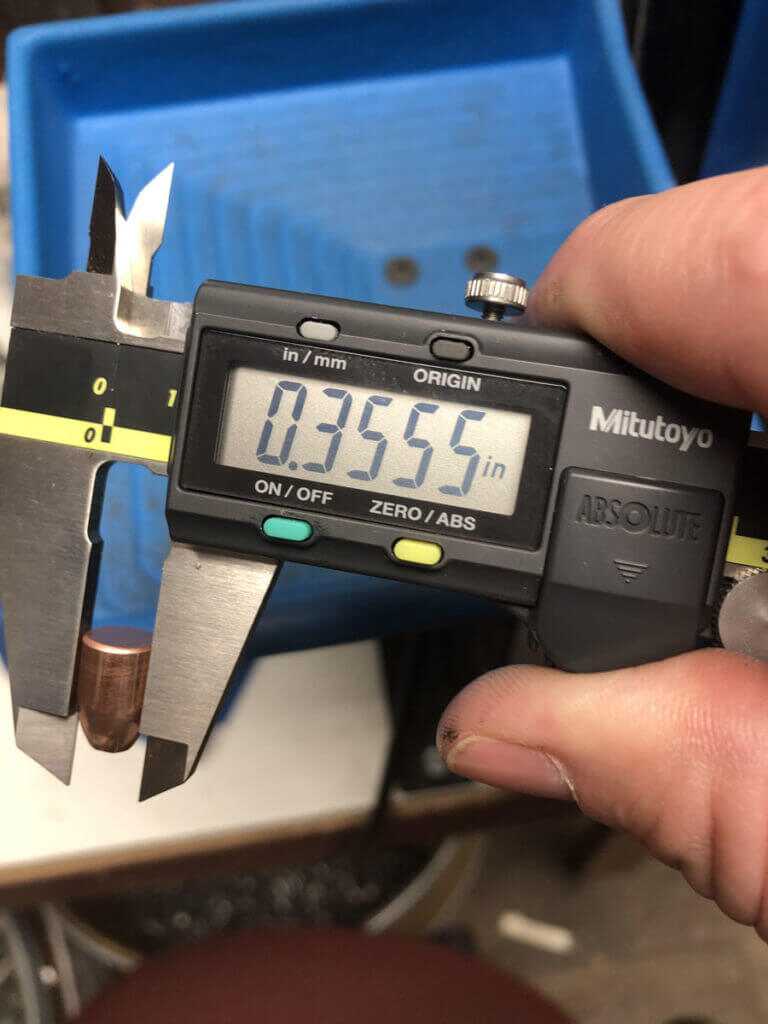
The next important variable is bullet weight. Now I am not too concerned if my bullets don’t weigh the exact “as advertised” bullet weight. What I am concerned with is the consistency of each bullet. Don’t misunderstand me, a 124-grain bullet as advertised should not weigh 132 grains. But if the allotment weighs an average of 123.8 grains or 124.3 grains then that is fine. What is most important is that each bullet has minimal weight variance from bullet-to-bullet.
The reason you want a very minimal spread on bullet-to-bullet weight is because if you keep all variables as close as possible when reloading you limit the margin of error that occurs on every shot. Remember you are shooting a projectile that weighs just over 120 grains traveling over 1,300 feet per second. You are dealing on a micro, not macro scale. When you are trying to obtain superior accuracy, you must keep the parameters constant or it will negatively influence accuracy. Again, working on a micro scale, if each bullet has a 2 to 5-grain difference then the balance of the bullet and the actual flight trajectory will be influenced differently per shot. It might not be a large difference but when you are trying for pure accuracy you can see the difference on the target. For comparison, it would be like throwing a golf ball and a baseball with the same amount of force. They will both go a good distance but will not land at the same spot with the same consistency as throwing multiple of one of the balls.
On my scale, I weighed the 20 bullets. Four bullets weighed 123.9 grains, three bullets weighed 124.0, nine bullets weighed 124.1, and 3 bullets weighed 124.2. That is a spread of .3 of a grain overall. Better than acceptable as far as I am concerned.
Next, I loaded these bullets on my Mark 7 Auto Drive. The actual load is: RMR’s 9mm (.3555) 124-grain bullet seated in a Starline 38 Super Comp case with CCI small pistol primers and fueled by Hodgdon CFE Pistol. The average velocity is 1390 ft./s across my Chrono. Overall length is 1.235 with a .378 crimp (.378 is a .002 crimp on a .355 with a Super Comp case).
When handloading, be careful of overcrimping as you can change the shape of the bullet, damage it, and cause malfunctions.
Performance
For the test, I will use my Team Infinity IMM Open Gun with a Cmore RTS2-6 minute red dot sight. To begin my test I always load and shoot the first chambered round into the backstop, not on the target. The reason for this is that I want my semi-auto pistol to return to battery in the exact same manner it does during normal cycling. Hand cycling the first round does not create the same type of battery lock up. This is a bullet test, not a gun test, so I want to maintain the same parameter for each shot. I am using a standard pistol rest and sandbag. My target is at 22 yards and each group is five shots.
First Group:
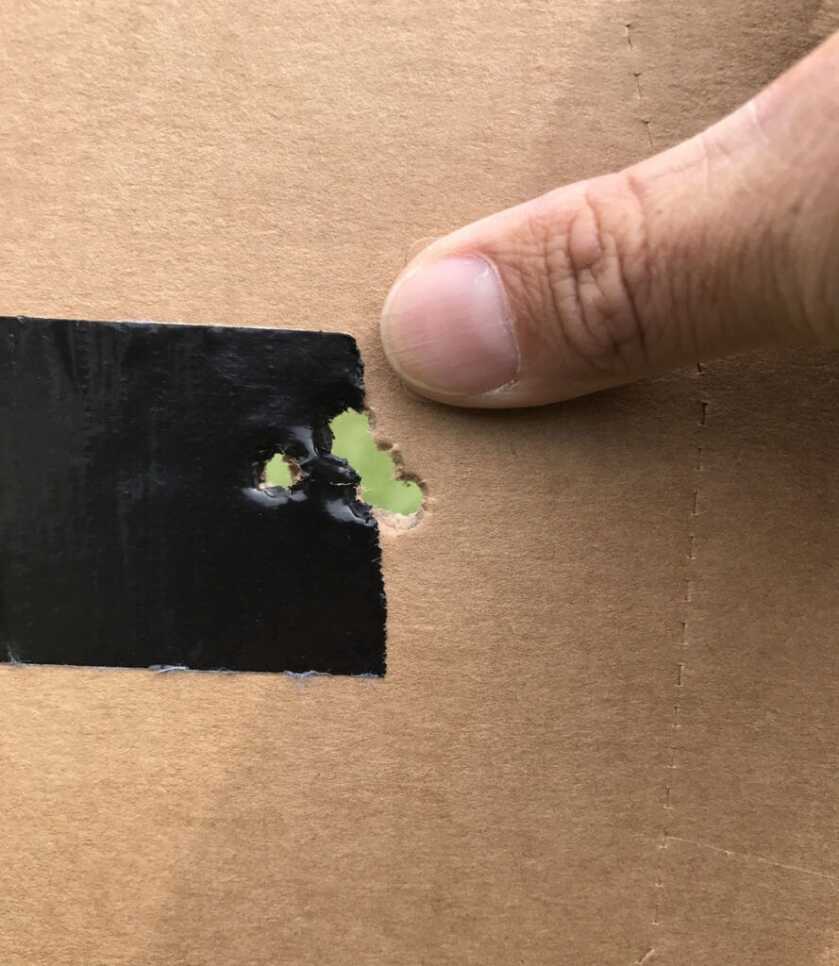
Second Group:
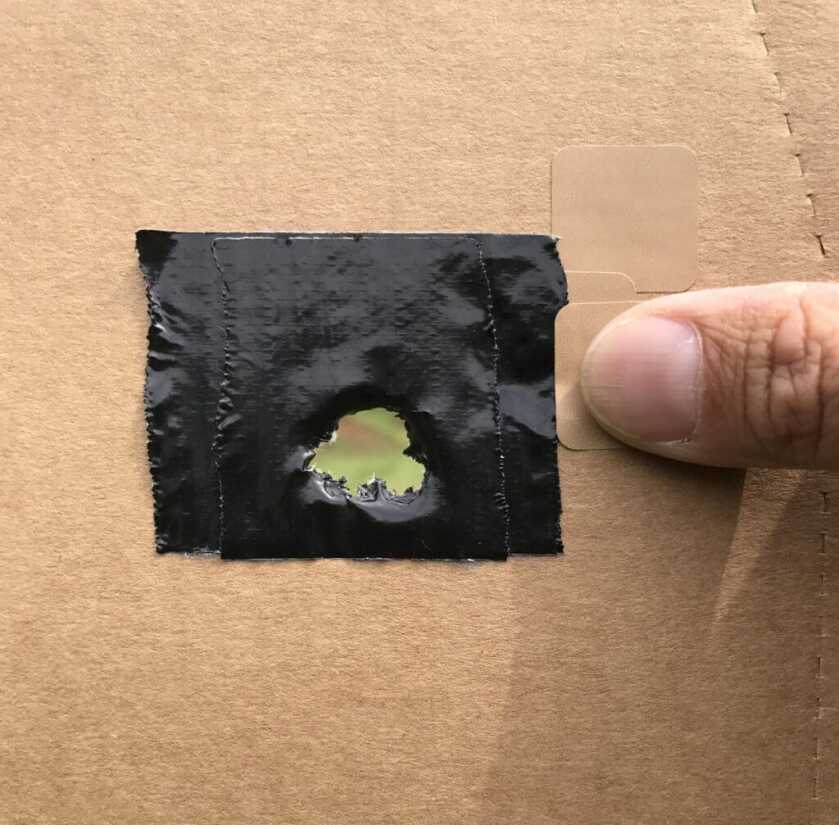
The last picture is a day later (overcast) when I tried a different Infinity Open gun and a different powder but still maintained the same velocity:

As we can see the RMR 9mm 124 JHP’s produced exceptional results. I have tested many different bullets out of my Infinity so I know what my gun is capable of. This company from Idaho has outdone themselves. To create a bullet that has such consistency and at a price like this is commendable.
Now some people will say that it’s a pistol and it doesn’t matter or that exceptional accuracy like that is really never needed. I could not disagree with them more. I have seen time and time again where people say the phrase, “it’s good enough.” I was never taught to accept mediocrity or subpar results. I was taught if you’re going to do something, do it right. In regards to reloading, it is not 1% more difficult to do it the right way versus doing it the wrong way. Reloading is based on knowledge and experience. And if you use the provided resources properly there is no reason that your end product cannot be match grade. I have had matches that have come down to the wire. I have had matches that I lost by just a few points on 1,400 + point matches. If I had scored just a few points better on ONE of the 100+ targets we shoot, I would have been the winner. If I would’ve had one solid hit instead of an edge hit on the steel target, again I would have been the winner. If I missed a high point scoring line on the target buy just a millimeter potentially because of inaccuracy then there is the difference between winning and losing. So please don’t anyone ever tell you that, “it’s good enough”. Reloading right versus wrong takes the same amount of effort.
Price
So now let’s talk about that part that I deferred to the end of my review. Price. We can clearly see that these bullets have exceptional performance but the price is what really sets them apart. First, RMR includes shipping in all their prices and at $99 per 1,000 for premium hollow points, RMR clearly has the consumer in mind. They even offer bulk quantity discounts right on their website. If you don’t need a premium hollow point, they also make regular 9mm FMJ with the same tight tolerances starting at $79 per 1000. I can tell you from experience that quantity will excel your learning curve but without quality, you’re just pulling the trigger hoping for good results. There is no hoping with RMR bullets. As a professional shooter, there is no better feeling than knowing for sure you aren’t ever wasting a single shot. That your groups are as good as they could possibly be and that your misses are 100% your fault and not an ammo or gear issue.
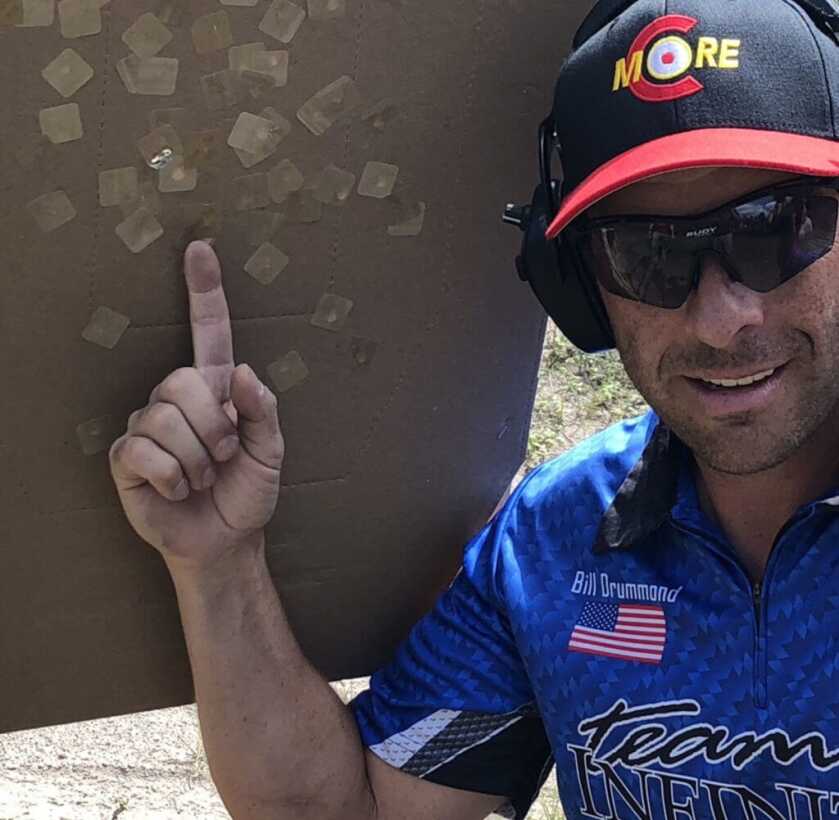
I have been through many trials and errors. I believe I have gained some knowledge from these experiences. Some were good, some bad, and some just frustrating. But I can honestly say that my experience with these bullets has been positive and shooters will benefit and really enjoy their match performance. I know I have during competition.
Shoot strong and shoot safe.
Bill Drummond

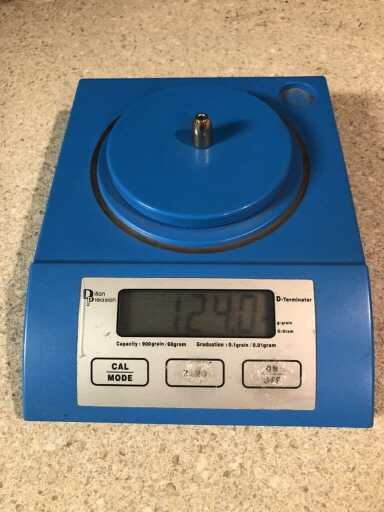
Great bullet. Just got some. Shoots consistently 3.8 – 4.7 inches at 100 yards. CZ shadow 2 with barrel bushing and Holoson 507. From a bench of course Shoots as well as my 115 gr xtp. 5.8 gr of power pistol
I would be interested in seeing expansion tests done on the 124 grain hollow point. I need a protection bullet to use without breaking the bank.
I have been using RMR bullets USPSA competition for more than 5 years. I trust them at all distances.
R Zillick
Tellico Plains, Tennessee
You might be surprised by the groups you get from a stock Glock 17. I own RMR bullets and I understand that there are a CRAP ton of Glocks out there. If I had developed a bullet that didn’t shoot amazingly out of Glocks, I wouldn’t be a very good bullet maker. Two of the four employees are winning matches using Glock 34s. It doesn’t matter which gun you shoot them from, if your bullet is consistent and well made, its gonna shoot way better than a mass produced plated bullet.
I too have purchased bullets and primed brass from RMR. Their quality and service is their benchmark. Customers are treated like valued friends.
I have been buying from RMR for a few years now. Their prices are what initially brought me in, but since then their customer service has been what has me hooked. They truly treat their customers like part of the family. I (and others) have received personalized, hand-drawn pictures and thank you notes with my orders in the past. They have a fantastic Facebook group where the owners, employees, and other customers will answer questions (often within minutes) and offer advice for loading their bullets. This has become one of my favorite companies to shop with in the shooting sports communities.
Been shooting RMR for over 4 years. Great bunch of guys to deal with. Old fashion ethics and they bend over backwards to make customers happy. I ordered 1000 “Grab Bag” roughly 4-5 years back…there was an issue with being 500 short. Before sending my order , They called me personally to apologize for the mistake and asked if 500 Hollow Points would be an acceptable trade ! uh, YEAH ! Most would have just gave money back, but RMR stepped up…and made sure I received my 1000 (plus)…. You can always expect an extra hand full of what ya order…no short counts. Give RMR a chance and they will earn your business…and as you can see from Bill’s pictures…they flat out shoot.
Enjoyed this article, especially the details on his reload specs. I would be curious to know what weight powder he throws. I recently changed to CFE pistol powder for my loading, and I download from max charge to promote accuracy.
Don,
Thank you for the kind words. My load for CFE with my gun set up is 8.7 grains. Please read Hodgdon’s loading charts and develop a load specific to your gun using a chronograph with a close watch for signs of pressure. I have 4 ports in my barrel which bleed a lot of gas, as well as require a high charge to obtain the velocities I need.
I would be curious to see what the author does with a stock firearm, such as a Glock 17 or something comparable.
Jeezus B Christ–I’d be happy if I shot those groups with my rifle and Nightforce.
Timely article–I stumbled upon them a few weeks ago and have received a few thousand 9mm bullets–hope my results are a quarter as good as your’s.
Great groups but I suspect your Team Infinity IMM Open Gun is not a $400 gun…You ain\’t gonna get that kind of group with a Glock 17.
Robert,
Showing the group sizes was not the point nor my intention for the article. It was more of reflection on what quality components can bring to any specific shooting platform. Based on the data provided, I can assure you that this tested bullet will give a Glock 17 superior accuracy with results versus some typical store bought ammo and a majority of hand loaded ammunition. Just as powders, spring rates, and overall gun set up can optimize usability and function of a firearm, components can also enhance the potential as well. I encourage you to try some of these and post back with your results.